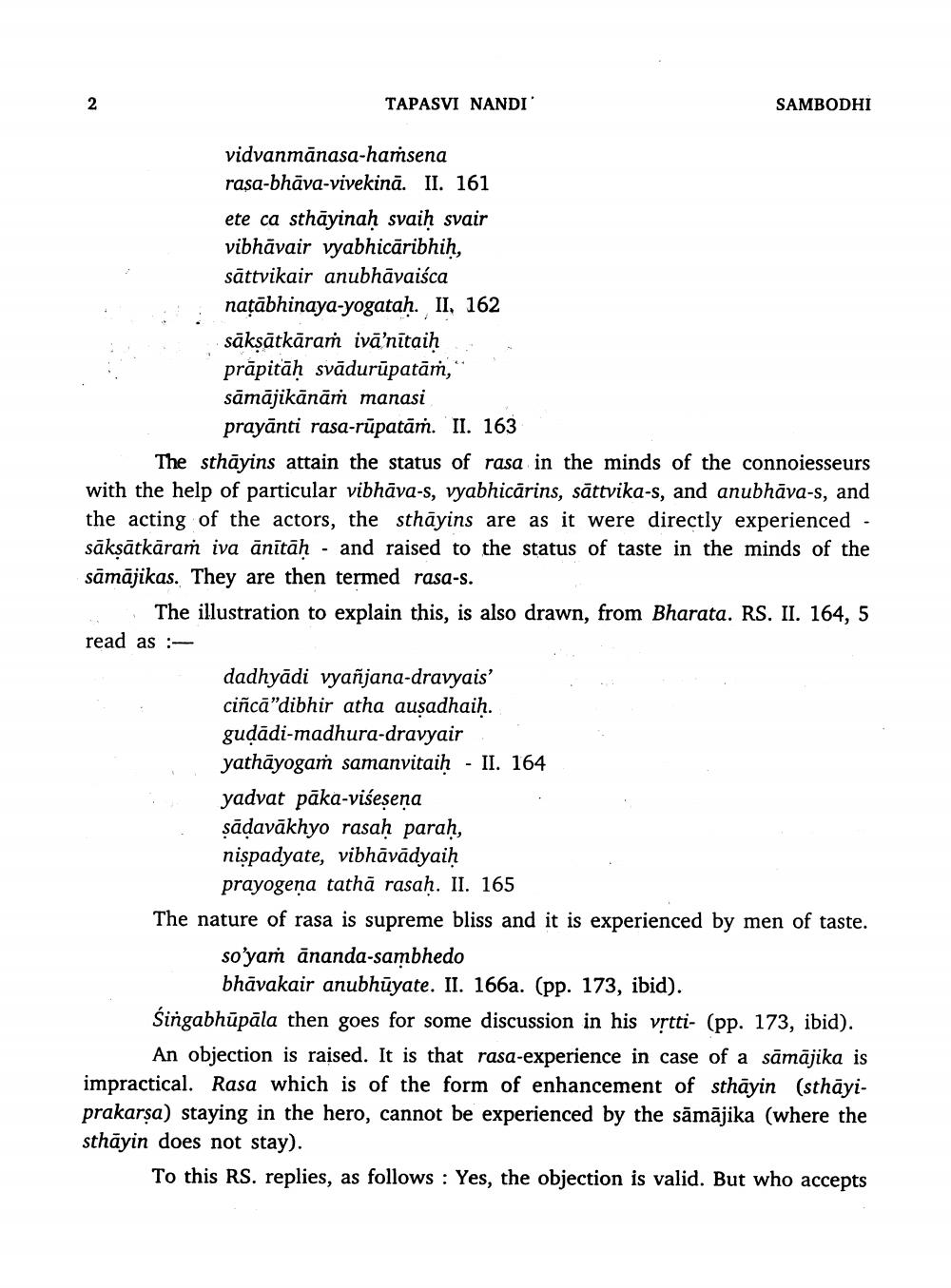Book Title: Sambodhi 2004 Vol 27 Author(s): J B Shah, N M Kansara Publisher: L D Indology Ahmedabad View full book textPage 8
________________ TAPASVI NANDI SAMBODHI vidvanmānasa-hamsena rasa-bhāva-vivekinā. II. 161 ete ca sthāyinah svaih svair vibhāvair vyabhicāribhih, sättvikair anubhāvaiếca naţābhinaya-yogatah II, 162 sāksātkāram ivā'nītaih prāpitāh svādurūpatām, sāmājikānāṁ manasi prayānti rasa-rūpatāṁ. II. 163 The sthāyins attain the status of rasa in the minds of the connoiesseurs with the help of particular vibhāva-s, vyabhicārins, sāttvika-s, and anubhāva-s, and the acting of the actors, the sthāyins are as it were directly experienced - sākṣātkāram iva ānītāḥ - and raised to the status of taste in the minds of the sāmājikas. They are then termed rasa-s. The illustration to explain this, is also drawn, from Bharata. RS. II. 164, 5 read as dadhyādi vyañjana-dravyais' ciñcā"dibhir atha ausadhaiḥ. gudādi-madhura-dravyair yathāyogam samanvitaih - II. 164 yadvat pāka-višesena sādavākhyo rasaḥ parah, nispadyate, vibhāvādyaiḥ prayogena tathā rasah. II. 165 The nature of rasa is supreme bliss and it is experienced by men of taste. so'yaṁ ānanda-sambhedo bhāvakair anubhūyate. II. 166a. (pp. 173, ibid). Singabhūpāla then goes for some discussion in his vrtti- (pp. 173, ibid). An objection is raised. It is that rasa-experience in case of a sāmājika is impractical. Rasa which is of the form of enhancement of sthāyin (sthāyiprakarsa) staying in the hero, cannot be experienced by the sāmājika (where the sthāyin does not stay). To this RS. replies, as follows : Yes, the objection is valid. But who acceptsPage Navigation
1 ... 6 7 8 9 10 11 12 13 14 15 16 17 18 19 20 21 22 23 24 25 26 27 28 29 30 31 32 33 34 35 36 37 38 39 40 41 42 43 44 45 46 47 48 49 50 51 52 53 54 55 56 57 58 59 60 61 62 63 64 65 66 67 68 69 70 71 72 73 74 75 76 77 78 79 80 81 82 ... 212
